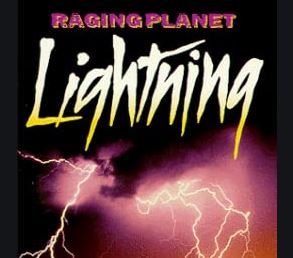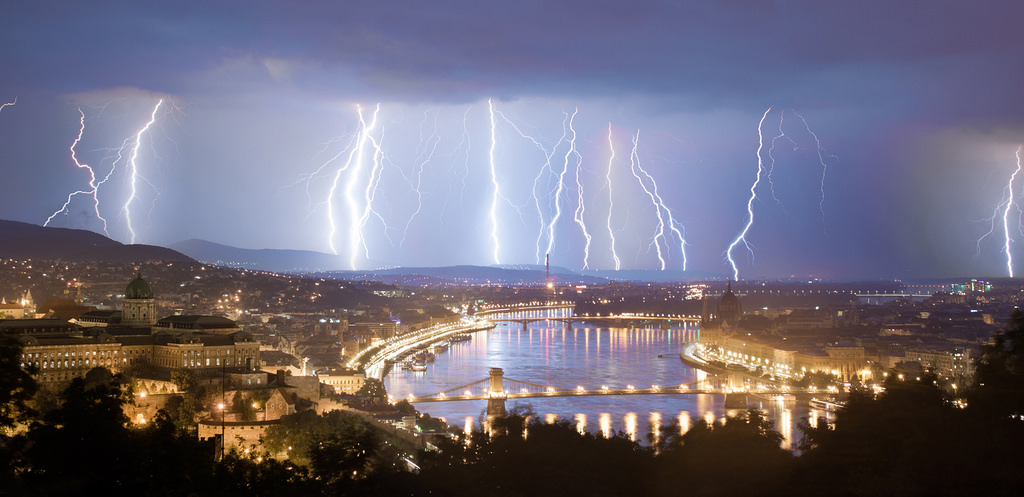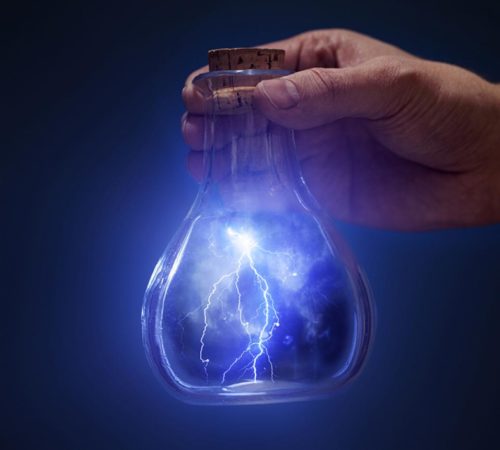
ENERGY SOURCE ISSUES
Harvesting Lightning Energy Challenges
- The ever-changing energy involved in each lightning bolt.
- Lightning is sporadic, therefore energy would have to be collected and stored.
- Difficult to convert high-voltage electrical power to the lower-volatage that can be stored.
- Impossibility of predicting when and where thunderstorms will occur.
- A technology capable of harvesting lightning energy would need to be able to rapidly capture the high power involved in a lightning bolt.
HARNESSING LIGHTNING STRIKES
FROM CLOUDS TO CAPACITOR- Lightning Farms
Imagine trains, airplanes or barges containing water proof Super Capacitors connected to grid batteries being geographical proximate thunderstorms for receiving the electric charge from lightning emanating therefrom. The tops of skyscrapers are perfect places for positioning Super Capacitor electrodes for accepting lightning strikes.


Currently existing Lightning Rods (LRs) on tops of skyscrapers worldwide can be used as electrodes to a Super Capacitor by simply running the LR to a power line instead of into the ground. If the Super Capacitor completes a circuit to a battery system, a constant positive charge on the electrode some 300 feet in the air is possible, which will attract negatively charged lightning.
If the polarity is switched, a negative charge on the electrode will attract positively charged lightning from the upper atmosphere, which is ten times as powerful as lower atmospheric lightning.
Atmospheric ionization can be accomplished in a number of ways to induce lightning:
1) lasers can be used to heat the water vapor in clouds causing ionization to occur which is a catalyst for lightning.
This process could actually enable a steady current to flow from cloud generated lightning to the super capacitor by continuous laser ionization movement through cloud formations in general;
2) battery plasma, silver iodide, iron iodide and the like can be deposited in clouds to cause cloud ionization (called cloud seeding);
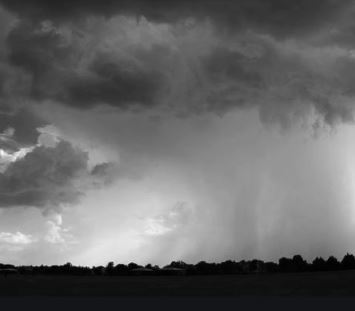

3) plasma from nuclear reactors can be filtered through a magnetic field the strength of our magnetosphere to produce non-radioactive plasma to deposit in the atmosphere to cause lightning (clouds not required) which may be more efficient than boiling water to turn a turbine; and
4) a drone type shuttle can go back and forth from the lower atmosphere to the upper atmosphere to collect natural plasma near the ionosphere to be released into the lower atmosphere to induce lightning.
A recent documentary, titled: “Raging Planet”, can be downloaded from Netflix. It shows that naturally occurring lightning happens daily in places like Colombia, Rwanda, Argentina, Brazil and DR Congo. This documentary explains that a negatively charged lightning strike can reach approximately one trillion volts, whereas, positively charged lightning can be ten times that.
The Christ statue in Rio de Janeiro gets hit by lightning an average of 6 times per year. Although one would not want to damage the statue, a simple way to understand the invention, is to imagine a metallic probe electrode connected to the anode of a huge capacitor, and the pre-charging of the capacitor creates a bias voltage on the anode that will attract the negatively charged lightning of a certain radius of say 20-30 miles, depending on the amount of the bias voltage.
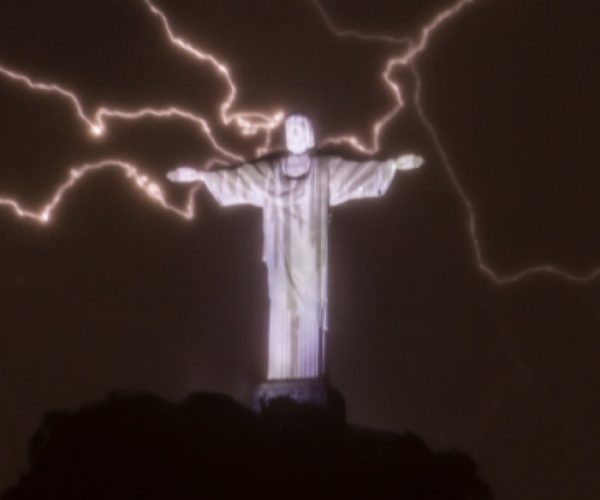

We have all seen lightning go from cloud to cloud travelling over 30 miles in a sub second. One can imagine 100s or 1000s of statue strikes instead of 6, with the introduction of a crystal oscillator disturbed by high voltage from Super Capacitor probes of opposite and bipolar polarities.
When we see lightning, all we see from the naturally occurring phenomena is that level of voltage that accompanies a lightning strike when a critical mass of potential energy between the clouds and the ground occurs in nature.
Imagine depositing a huge amount of ionized gas (plasma) in the atmosphere (not necessarily in the clouds), thus creating a much larger potential difference over a Super Capacitor farm having at least one active probe having a charge to attract continuous lightning strikes, trickle charging the battery system or the Super Capacitor (or both), and getting a surge of a trillion or so volts whenever it rains… and even when it doesn’t rain, etc.
AMAZING ENERGY POTENTIAL
- Lightning (negatively-charged) can have 100 million to 1 billion volts of energy – NSSL (National Severe Storms Laboratory)
- Lightning (positively-charged) can have 10 times that much – “Raging Planet,” Documentary Netflix
